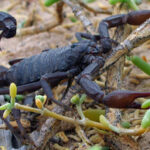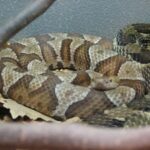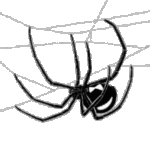Spiders are a diverse group of arthropods with eight legs, segmented bodies and fangs. Though many people are afraid of spiders, the overwhelming majority of spiders are harmless and even beneficial to people. A few spiders species, however, can inflict serious injuries and should never be handled by people. Though dangerous spiders are intimidating, they are not aggressive unless provoked and are an important part of the ecosystem. They prevent pest overpopulation, pollinate plants contribute to Earth’s biodiversity. There are very few venomous spider species in the U.S.
Widow Spiders
Latrodectus is a genus of spiders commonly referred to as widow spiders. All members of this genus are venomous. The black widow spider is perhaps the best-known widow spider species and is named for the female’s tendency to occasionally eat the male after mating. All widow spiders have red markings, and black widows are black or dark brown with a red hourglass shape on their abdomens. They typically reside in abandoned areas with little foot traffic like sheds and wood piles. They reflexively bite anything that touches their web. Though a bite from a black widow requires immediate medical attention, there are effective antivenin treatments available, and less than 1% of people bitten by these spiders die.
Recluse Spiders
There are about a dozen recluse spiders species in the U.S., the most common of which is the brown recluse. Humans rarely come into contact with recluses because they build their webs in dry, secluded locations. They have brown bodies with violin shapes on their abdomens, though identification can prove challenging. Several nonvenomous spiders also have violin-shaped markings and the brown recluse’s markings are only visible up close. The defining trait of this spider is its possession of six eyes. Most spiders have eight. Their venom destroys red blood cells and can cause serious systemic infection. With prompt medical treatment, the overwhelming majority of people do not become ill at all after being bitten by this spider.
Wolf Spiders
Wolf spiders possess a mild venom that is not deadly to humans by itself. However, a bite from this spider frequently results in a serious infection and bites are always very painful. These spiders are common in all areas of the U.S. and are frequently found in homes. They have long legs, slender bodies and visible fangs. Most wolf spiders are brown or black with lighter markings on the tops of their bodies. They hunt for their prey instead of building webs and are aggressive when provoked.
Funnel Web Spiders
Funnel web spiders are medium-sized spiders with long, jointed legs. They come in a variety of colors and patterns and build funnel-shaped webs in grass and gardens. Most are harmless to people and are not aggressive. However, the Australian funnel web spider is among the most venomous animals in the world. It is large with a rounded abdomen and jointed legs, and superficially resembles a tarantula. They build webs in cool and moist locations covered by rocks, grass or debris.
Hobo Spiders
Hobo spiders are frequently referred to as aggressive house spiders and reside primarily in the Northwestern United States. These spiders are occasionally referred to as funnel web spiders because of their funnel-shaped webs, but are actually members of a different spider genus. They have reddish-brown heads and legs with darker brown abdomens and long, jointed legs. Though their bites are rarely deadly, they cause significant pain, swelling and tissue damage. Some species have chevron-shaped markings on their abdomens. They build webs in gardens, homes and patios, and bite anything that comes into contact with their webs.
Sources:
- National Audubon Society Field Guide to North American Insects and Spiders”; National Audubon Society; 1980
- “National Wildlife Federation Field Guide to Insects and Spiders and Related Species of North America”; Arthur Evans, Craig Tufts; 2007
- “Spiders and Their Kin”; Herbert W. Levi, et al.; 2001
- Venombyte: Venomous Spiders of the United States



